Vastgoed in het Buitenland: Development of Shibuya as an Entertainment-City based on TOD
Editie: 23.3 - Verstedelijking
Published on: 12 juni 2016
The aim of this paper is to describe the development of Shibuya, one of the sub-centres in Tokyo, and discuss the effects of promoting a city by entertainment for the public-transport oriented TOD (Transit Oriented Development).
 |
Masafumi Ota received a Master of Engineering in Civil Engineering from the University of Tokyo. In 1984 he joined Tokyu Corporation and in 1987 he joined the Tokyu Research Institute. In 1995 he received a Ph.D from the Barlett School of Planning at University College London. That same year he joined the Transport Headquarters of Tokyu Corporation. In 2010 joined Tokyu Station Retail Service, and in 2013 he joined the Development headquarters of TOkyu Corporation where he is the Deputy Executive General Manager at the moment. |
The aim of this paper is to describe the development of Shibuya, one of the sub-centres in Tokyo, and discuss the effects of promoting a city by entertainment for the public-transport oriented TOD (Transit Oriented Development). Shibuya, situated about five miles from the centre of Tokyo and on the circular Yamanote Line, is an area where various activities like commerce, office, etc. are agglomerated with high density around the railway terminal. Five railway lines carry 2.4 million commuters through Shibuya Station, and now many construction works are being carried out around it towards the Olympic Games in 2020.
0
A notable feature of the project is that these are arranged under a scheme of the public-private partnership. It is underpinned by the policy of the Urban Regeneration, which was announced in the early 2000s, to promote the status of Tokyo as a World City. As such, some property developments are deregulated to attract investment from the private sector, and it was reckoned that this was effective to increase the quality of public space without a large scale of expenditure. Tokyu Corporation is a key player in Shibuya because it has carried out wide variety of businesses such as railway, property development and retail there and in its hinterland. The strategy is closely associated with the history and forthcoming conditions towards the future.
0
Historical Background
It was 1950s when Tokyu started with the development and construction of areas around the railways. The basic concept was the Garden City which was proposed by Ebenezer Howard in London. The living environment in the built-up area in London was very low in quality, mainly due to air and water pollution dispatched by manufacturing plants. Howard argued the necessity of decentralisation towards the Garden Cities; i.e. satellite towns in suburbs in order to attain higher quality of life for the people living there. An entrepreneur from Japan, Eiichi Shibusawa who was the founder of Tokyu, imported the idea of the Garden City and executed the development areas of agricultural and forestry uses from ten to twenty miles radius areas south-west of Tokyo.
The difference between Howard and Shibusawa was that Howard targeted self-containment, meaning living and working in the new satellite towns, whereas Shibusawa provided the same good living environment while developing a rapid and convenient railway service to access to the centre. In reality however, Howard’s self-containment was never achieved due to rising car ownership that enabled people to commute to everywhere from the suburban business parks. On the other hand, Shibusawa’s Garden City created more environmentally sustainable urban structure that were sustained by good public trans- port, mainly railways. From a point of view of a private firm, this was an opportunity to grow making most of the massive in-migrations from other part of Japan to Tokyo.
The common point of the two cities, London and Tokyo, was the Green Belt policy, but the former was successful despite the failure of the latter due to the development-oriented mind rather than the conservation of the landlords. Originally, the policy intended to halt outward encroachment of the built-up area at a metropolitan scale. The planning authority of Tokyo could not apply it because of a large scale population influx from the other part of Japan. The area management/development companies like Tokyu exploited the trend and started the project of the Japanese style Garden City. Shibuya was situated at the hub of it.
It was 1934 when Toyoko department store, operated by Tokyu, opened at a premise next to the railway terminal. It was intended to provide high quality retail services for people of the suburbs along railway lines. At the same time, it was effective to encourage people to use the railways to greater extent for purposes other than commuting like enjoying family life by shopping and other activities in Shibuya. Tokyu successfully proposed a fashionable life style of the Garden City and established the area brand. Shibuya has played a key role in creating this image.
It is worth noting that the development of Shibuya has not been progressed only by Tokyu. For example, it was a great turning point that NHK; the headquarters Japanese national public broadcasting organization, moved to the former American army site situated 500 meters north-west of the terminal in 1972. After the relocation, many property developments have been carried out in the area by various bodies competing each other. This situation led Shibuya from just a department store on the terminal to an amusement and entertainment district which attracted a lot of visitors, especially young people, from wider areas. Tokyu kept on investing in Shibuya as it opened Bunkamura; a cultural complex composed of concert halls, cinemas and a museum in 1989, and two city hotels in 2000 and 2001 respectively, intending to attract more adults.
0
Current Development
A project of improving railway network services triggered the current property development around Shibuya station. This was to connect the Toyoko and Fukutoshin Lines which were completed in 2008. It was an important strategy from the point of the railway business to compete with paralleling JR Yamanote and Saikyo line by increasing accessibility to other sub-centres; i.e. Shinjuku and Ikebukuro. At the same time it was an opportunity to renovate the old-fashioned terminal and department store, because the station of Toyoko Line needed to move from a viaduct structure to underground in order to connect to Fukutoshin Line which was newly built under Meiji Street from the north. By using the premise of the former station, it was possible to enlarge the JR station and promote the level of services of changing different lines in the terminal. The change of tracks from viaduct to underground was carried out in one night in March 2013.
One year before the underground implementation, in May 2012, Shibuya HIKARIE (Figure 1) opened at a site with 9.6 thousand square meter of a former commerce and culture building owned by Tokyu next to the station as a leading project of Shibuya development. HIKARIE has a floorspace of 144 thousand square meters, which is composed of office, commerce and cultural uses. A feature of HIKARIE is that it is not only a property developed by a private sector, but also that it plays a key role for the infrastructure of Shibuya by providing efficient vertical pedestrian line, called a “Urban Core”, from B3 to 4F in the building. It effectively overcomes the barrier of Shibuya because the station is located at the bottom of valley. The Special Urban Renaissance District scheme was applied to the development as it eases plot ratio constraints; i.e. increase of development right by property assess the public contribution.
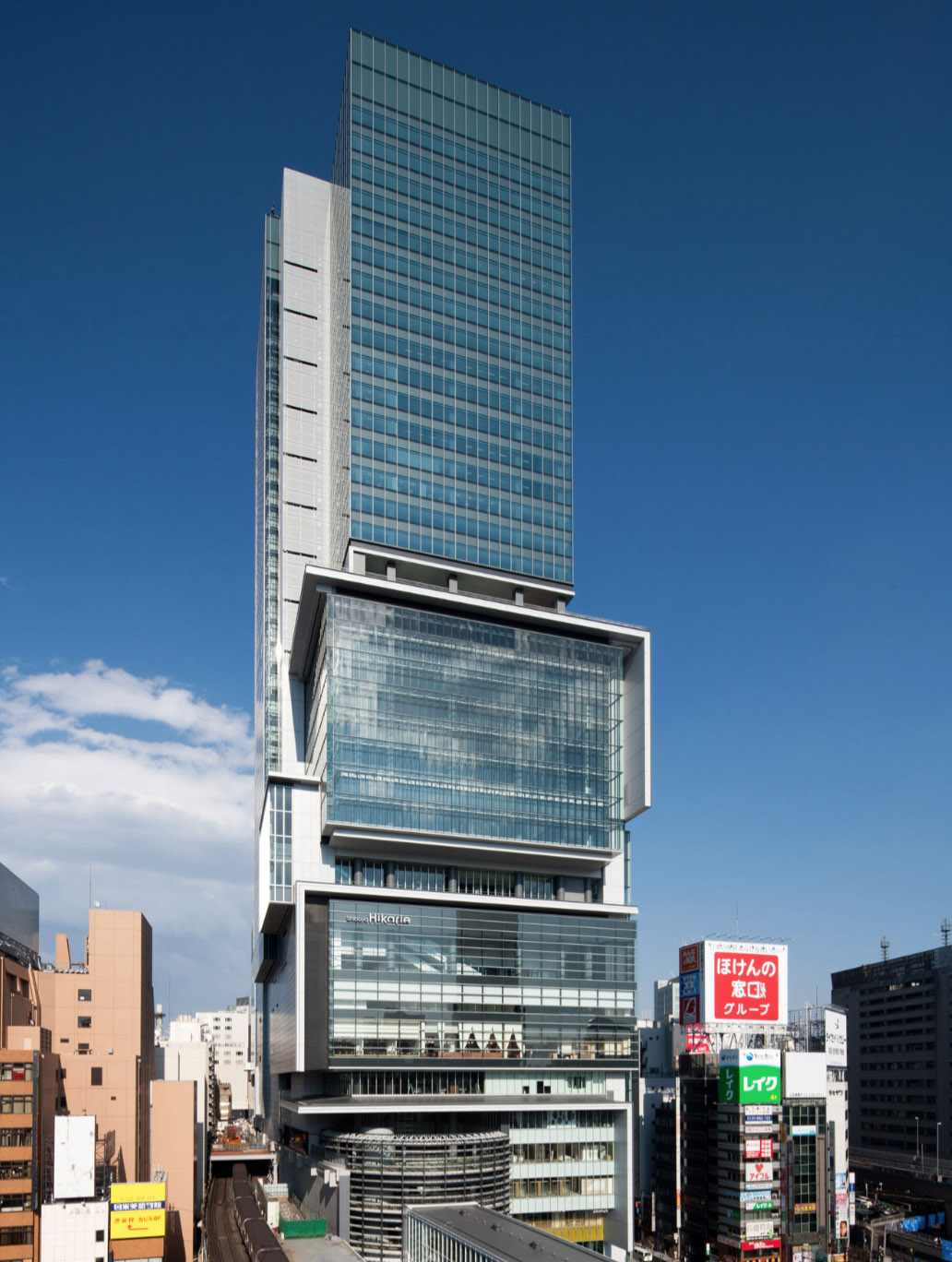 |
| Figure 1: Shibuya HIKARIE |
0
Another feature of HIKARIA is its publicly contribution by providing a musical theatre named “Theatre Orb” where well-known programs from Broadway and West End have been played since its opening in July 2012. This is based on a strategy for Shibuya to grow as an “Entertainment City”. Halls for concert and musical in HIKARIE and Bunkamura play key roles in attracting people from the railway hinterlands and even from all over the world. In fact, underpinned by the trend of globalization and growth of in-bound tourism, international tourists have rapidly increased, especially in the last few years. Hachiko Crossing in front of the JR station is one of the well-known places to visit, as it is widely discussed that the lively atmosphere by digital screens and billboards on the wall of buil- dings are similar to Times Square in New York.
The following four high-rise buildings, mainly consisting of offices and commerce, are being constructed in the Shibuya district:
- Shibuya Station Block (Figure 2): 276 thousand squaremeter floorspace, open in 2027 (East tower in 2019 with 181 thousand square meter).
- The South Block (Figure 3): 116 thousand square meter floorspace, open in 2018.
- Dogenzaka 1-choume Block (Figure 4): 59 thousand square meter floorspace, open in 2019.
- Sakuragaoka Block (Figure 5) : 253 thousand square meter floorspace, open in the 2020s.
An outdoor observatory will be built at the top of the East tower of the Station Block at a height of 230 meter (Figure 6), and it is expected to become one of major tourism spots in Tokyo as a World City. Furthermore, additional re- development projects are being examined and planned in Shibuya, especially the areas close to the ongoing ones like chaining investment.
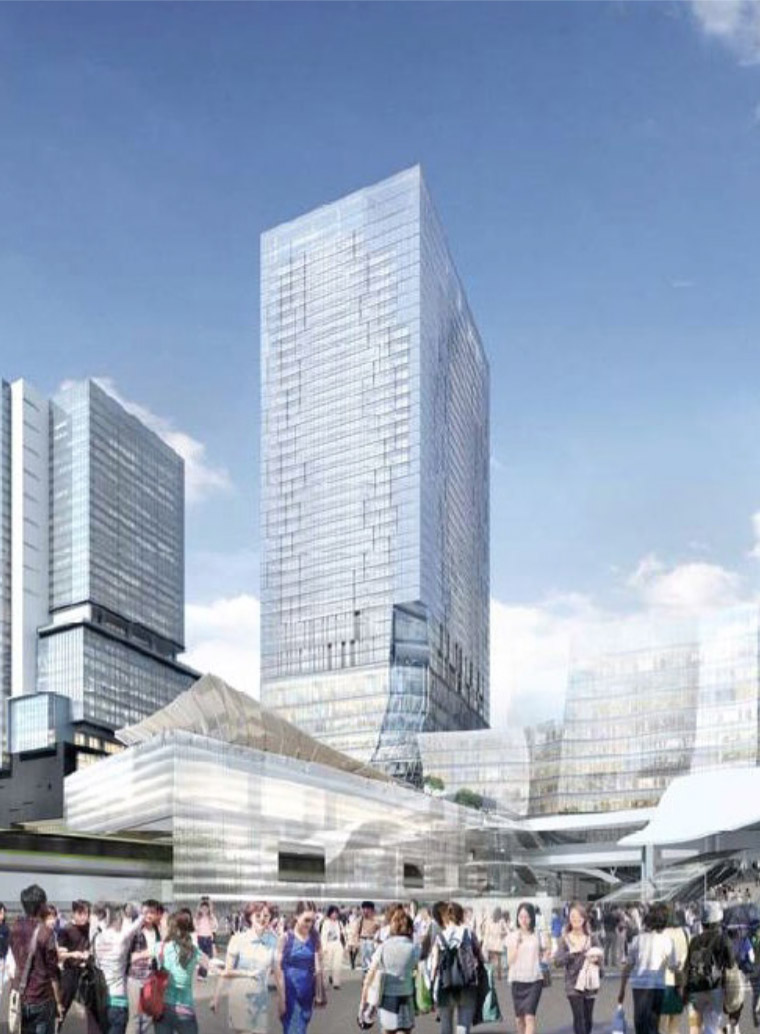 |
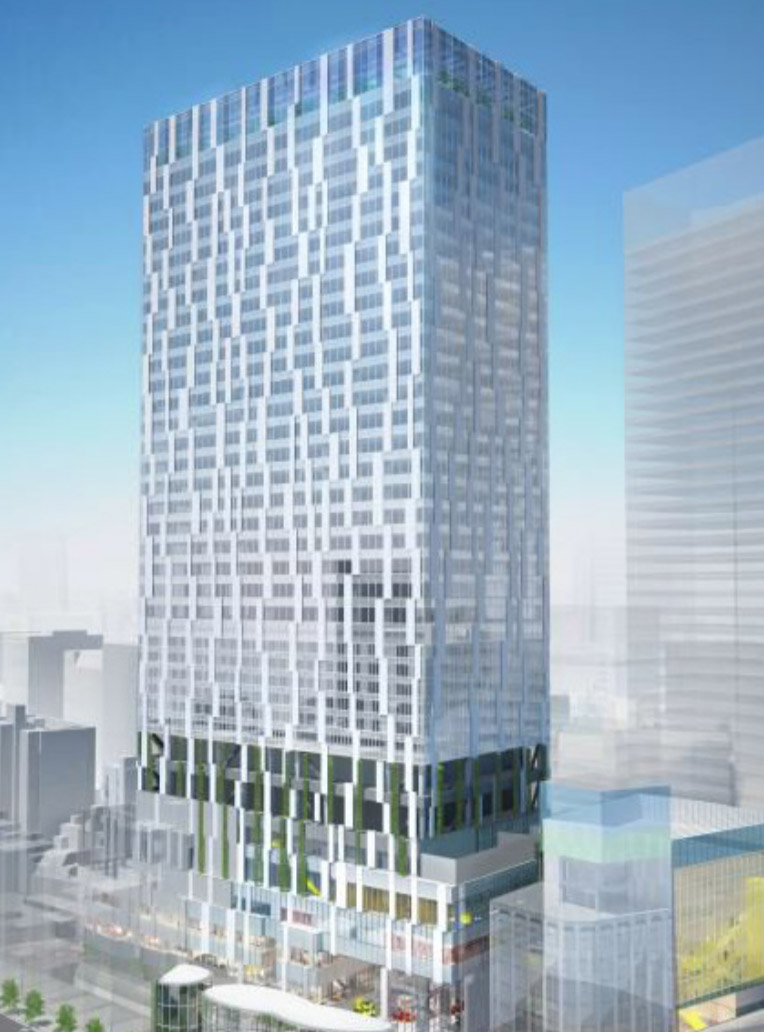 |
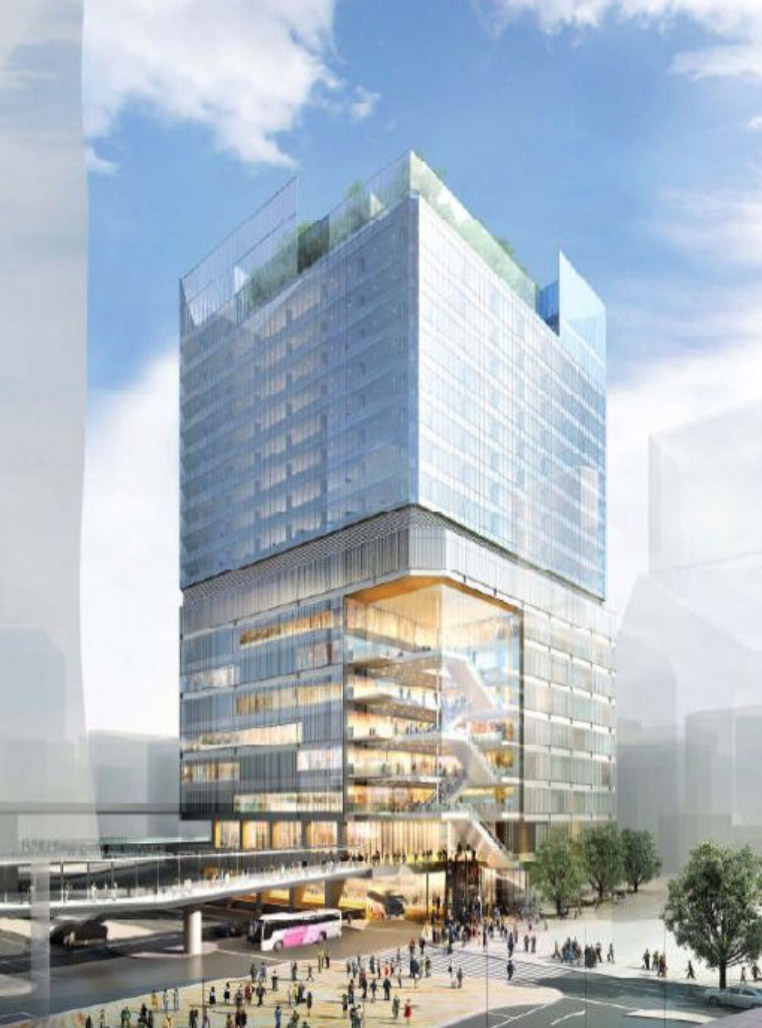 |
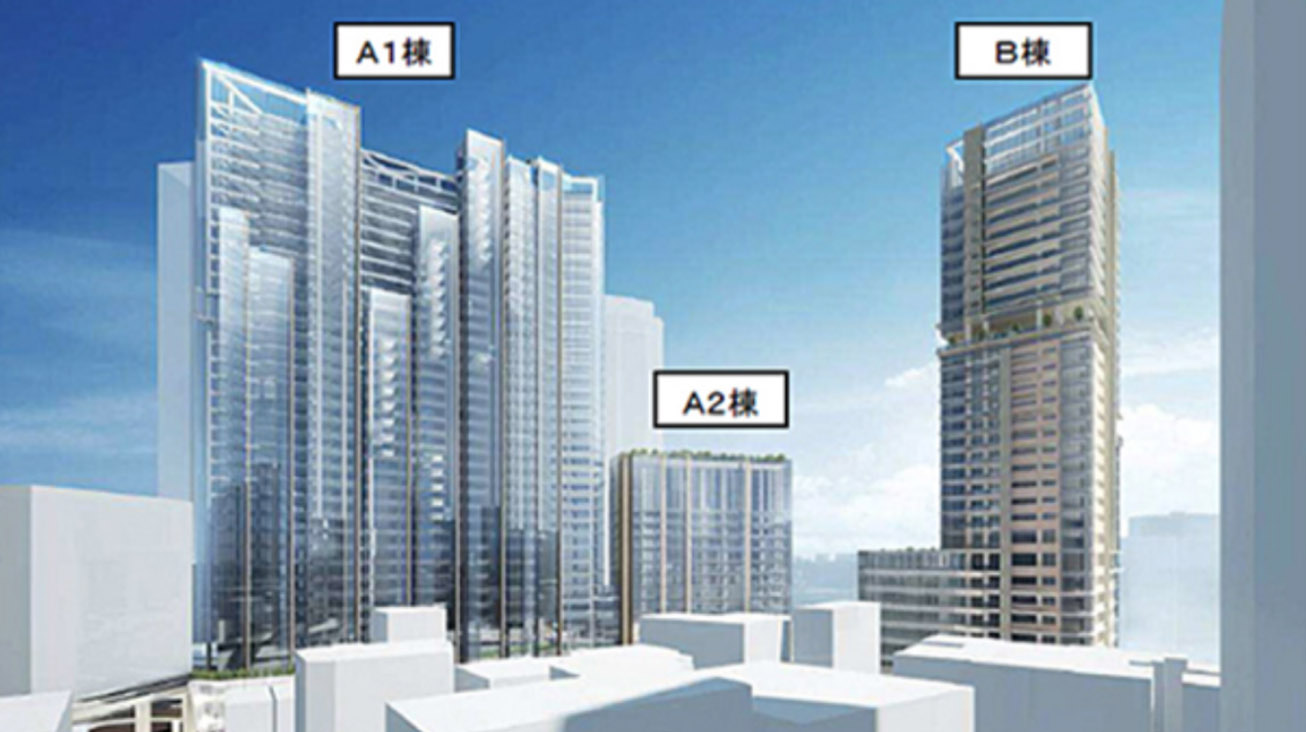 |
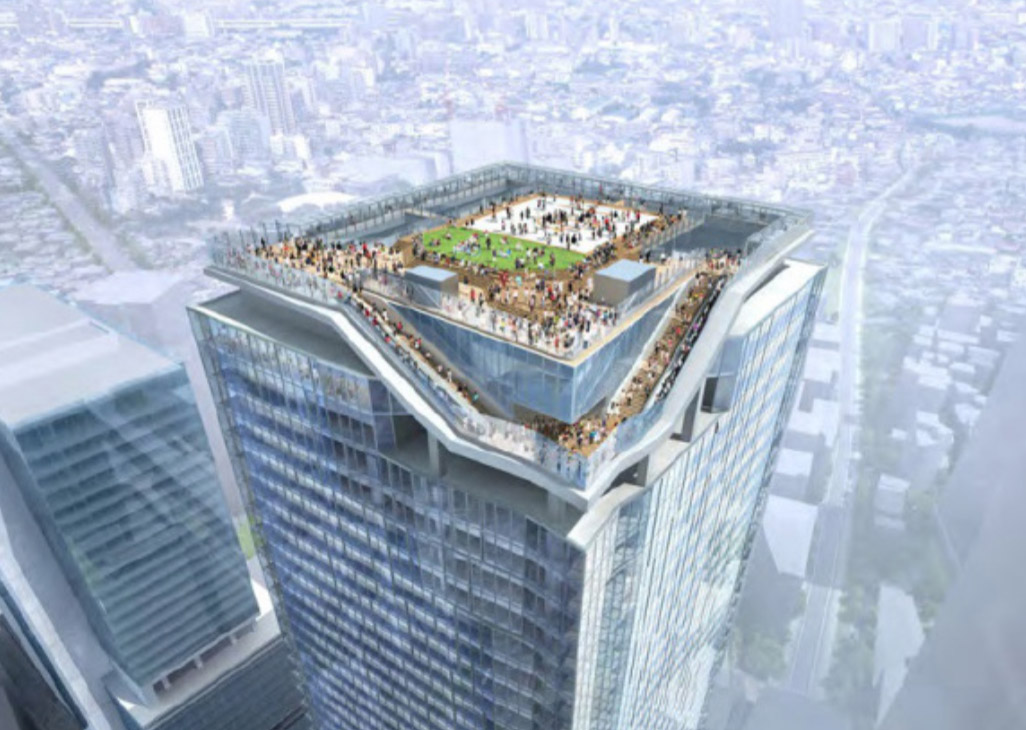 |
| Figure 2 – 6: Shibuya Station Block, The South Block, Dogenzaka 1-choume Block, Sakuragaoka Block, Outdoor Obseravatory top of the East Tower of the Station Block |
0
Concluding Remarks and Future Perspectives
It is worth noting that Shibuya project is a typical case of PPP; i.e. public private partnership. Many organisations or committees have been formed by various people from academics, governments, private firms and local communities, in order to ensure good communication and bring about synergy to maximize investment efficiency. Along with the progress of the project, the field of the PPP scheme has been expanded from hard aspects; i.e. infrastructure, architecture, landscape and so on, to soft aspects like community development, events and marketing, called the “Area Management”.
Toward the future, it is argued that the target should be geographically broadened from the area around the station a wider one. The regeneration of Shibuya river, situated in the South Block, is the model case as it needs to promote the cultural exchange with the neighbouring town, Daikannyama. A feature of Shibuya is that the surrounding towns within walking distance, like Aoyama, Harajuku, Ebisu and Daikanyama, have strong identities which can be utilized as local resources to promote the area. Under a strategy of utilizing the structural characteristic, Tokyu has consecutively made investments on property developments in this so-called “Greater Shibuya” area like “Omohara” in 2012, “TENOHA” in 2014 and “Log Road (Figure 7)” in 2015.
Another feature of the Greater Shibuya is that the area has a culture to attract entrepreneurs of various fields, such as IT, design, entertainment, etc. In order to strengthen this, Tokyu started the “Tokyu Accelerate Program” last year, which supports start-up venture firms by various measures including finance. In addition, since the relocation of the headquarters of Rakuten, a big IT firm with 10 thousand employees to Futakotamagawa of five miles from the centre of Shibuya, the office market has been seen to expand outward to the suburbs. This is a great opportunity for Tokyu to transform the hinterland of Shibuya from just a residential area to a more mixed use with a wide variety of functions including innovative working.
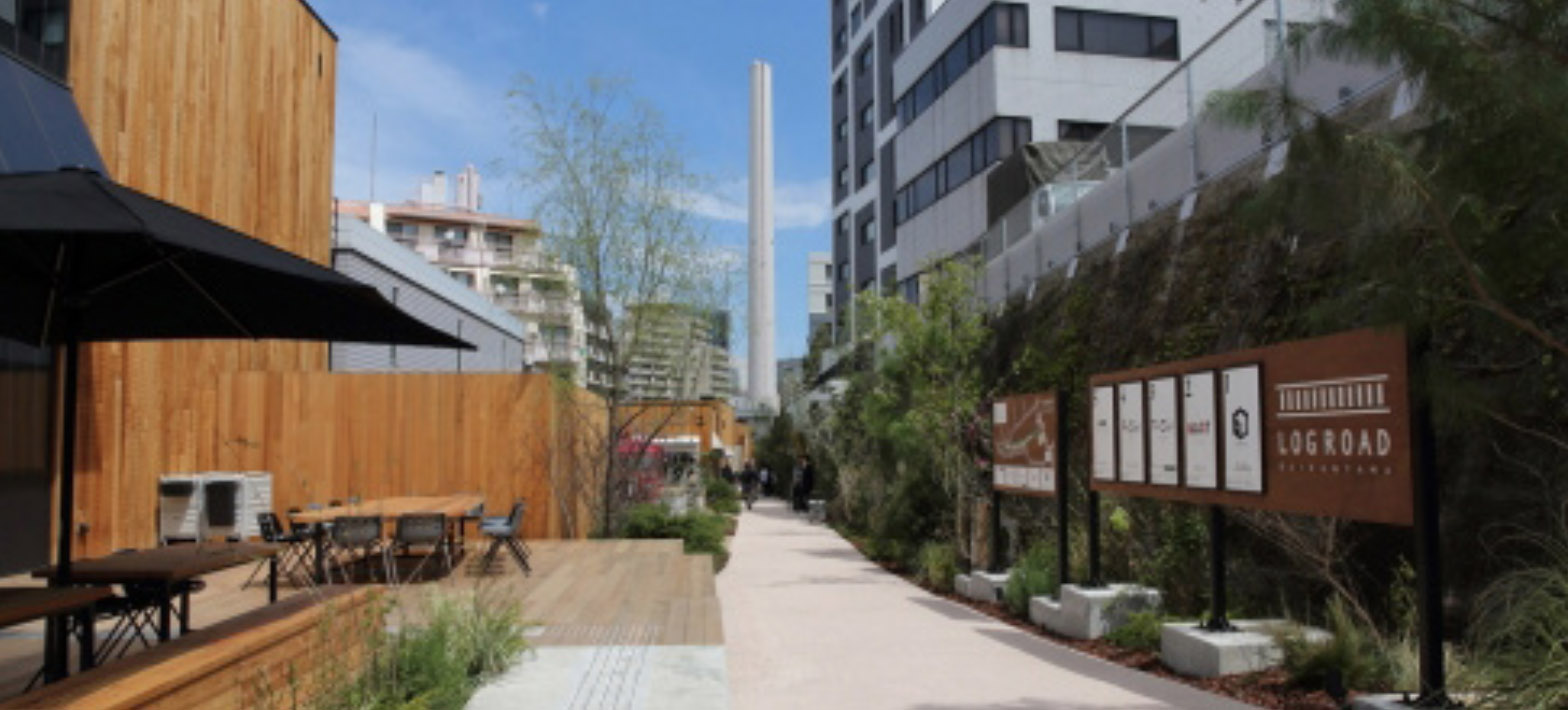 |
| Figure 7: Log Road Daikanyama |